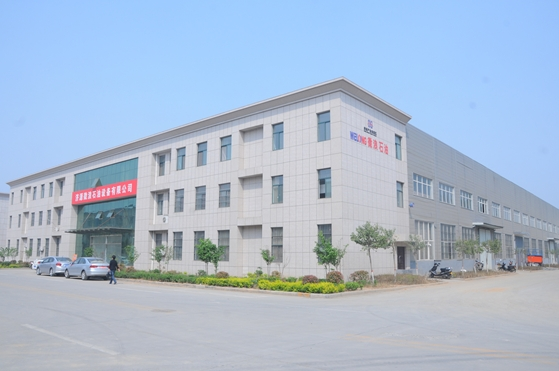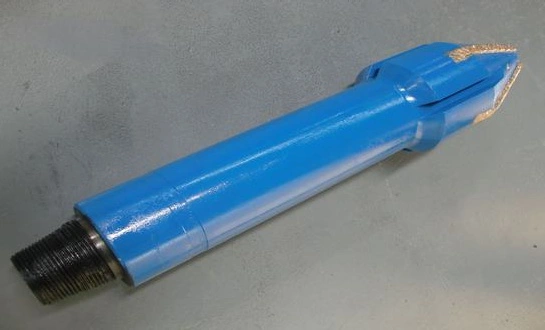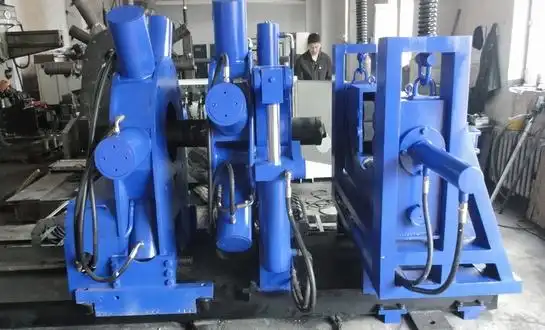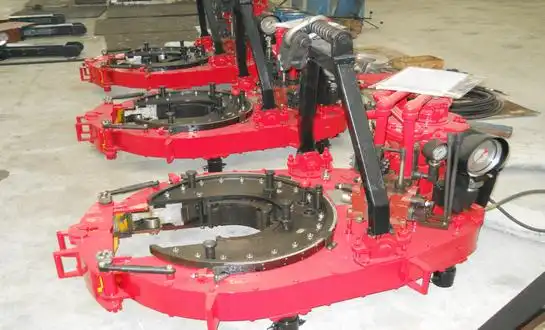High-Speed Steel vs. Tungsten Carbide: Pros and Cons for Heavy-Duty Rolling
High-Speed Steel: Versatility and Cost-Effectiveness
High-speed steel (HSS) has long been a popular choice for work rolls in metal rolling applications. Its versatility and relatively lower cost make it an attractive option for many manufacturers. HSS work rolls offer good wear resistance and can withstand high temperatures, making them suitable for a wide range of rolling conditions.
Advantages of HSS work rolls include:
- Excellent toughness and impact resistance
- Good thermal conductivity for heat dissipation
- Easier to machine and maintain compared to harder materials
- Lower initial cost compared to tungsten carbide
However, HSS work rolls also have some limitations:
- Lower hardness compared to tungsten carbide, potentially resulting in shorter service life
- May require more frequent replacements in high-demand applications
- Less suitable for extremely hard materials or high-precision rolling
Tungsten Carbide: Superior Hardness and Wear Resistance
Tungsten carbide work rolls represent a significant advancement in roll technology, offering exceptional hardness and wear resistance. These properties make them ideal for heavy-duty rolling applications and situations where prolonged service life is critical.
Key benefits of tungsten carbide work rolls include:
- Exceptionally high hardness, often exceeding 1200 HV
- Superior wear resistance, leading to extended service life
- Excellent surface finish capabilities for high-quality products
- Reduced downtime due to less frequent roll changes
Despite these advantages, tungsten carbide work rolls have some drawbacks:
- Significantly higher initial cost compared to HSS
- More brittle nature, requiring careful handling and operation
- Limited thermal shock resistance, necessitating precise temperature control
- More complex and expensive manufacturing process
Comparative Analysis for Heavy-Duty Applications
When considering work rolls for heavy-duty rolling operations, the choice between HSS and tungsten carbide often comes down to specific application requirements and long-term cost considerations. For example, in oil and gas industry applications where consistent product quality and minimal downtime are crucial, the superior wear resistance of tungsten carbide may justify its higher initial cost. Conversely, for more versatile rolling operations or those with frequent material changes, the flexibility and lower upfront cost of HSS might be more appropriate.
Factors to consider in the comparison include:
- Expected production volume and intensity
- Types of materials being rolled
- Required surface finish quality
- Frequency of roll changes and associated downtime costs
- Overall lifecycle costs, including initial investment and maintenance
How to Balance Cost and Performance When Selecting Work Roll Alloys?
Evaluating Total Cost of Ownership
When selecting work roll alloys, it's essential to look beyond the initial purchase price and consider the total cost of ownership (TCO). This comprehensive approach takes into account factors such as:
- Initial material and manufacturing costs
- Expected service life and replacement frequency
- Maintenance requirements and associated costs
- Impact on production efficiency and product quality
- Energy consumption during operation
By evaluating TCO, decision-makers can make more informed choices that balance short-term costs with long-term performance benefits. For instance, while a tungsten carbide work roll may have a higher upfront cost, its extended service life and reduced maintenance needs could result in lower overall expenses over time, especially in high-volume or demanding applications.

Tailoring Alloy Selection to Specific Applications
Different rolling applications have unique requirements, and selecting the right work roll alloy involves matching material properties to these specific needs. Factors to consider include:
- Rolling temperature range
- Required surface hardness and wear resistance
- Thermal conductivity and heat dissipation needs
- Corrosion resistance requirements
- Expected load and stress conditions
For example, in oil and gas industry applications where corrosion resistance is crucial, alloys with higher chromium content might be preferred. In contrast, for high-speed rolling of thinner materials, work rolls with excellent thermal properties and surface finish capabilities would be more suitable.
Optimizing Roll Performance Through Advanced Treatments
To further enhance the performance of work roll alloys while managing costs, various surface treatments and manufacturing techniques can be employed:
- Heat treatment processes to optimize hardness and toughness
- Surface coatings to improve wear resistance and reduce friction
- Controlled cooling techniques during manufacturing to enhance roll properties
- Precision grinding and finishing to achieve optimal surface characteristics
These advanced treatments can significantly extend the life of work rolls and improve their performance, potentially offering a cost-effective alternative to more expensive alloy options in some applications.
Emerging Trends: Composite Materials for Lightweight, Durable Work Rolls
Advancements in Composite Work Roll Technology
The development of composite materials for work rolls represents a significant innovation in the metal rolling industry. These advanced materials combine the benefits of different constituents to create rolls with exceptional properties. Some key advancements include:
- Carbon fiber reinforced polymers (CFRP) for lightweight, high-strength rolls
- Ceramic matrix composites offering extreme hardness and wear resistance
- Metal matrix composites combining the toughness of metals with the hardness of ceramics
- Functionally graded materials tailored for specific roll zones
These composite work rolls offer unique advantages such as reduced inertia, improved thermal management, and customizable properties across the roll surface. For industries like oil and gas equipment manufacturing, where precision and efficiency are paramount, composite rolls can provide significant performance enhancements.
Benefits of Lightweight Work Rolls in High-Speed Applications
The use of lightweight composite materials in work roll construction offers several advantages, particularly in high-speed rolling operations:
- Reduced energy consumption due to lower inertia
- Faster acceleration and deceleration, leading to improved productivity
- Decreased wear on bearings and drive systems
- Enhanced responsiveness in dynamic rolling conditions
- Potential for higher rolling speeds without sacrificing precision
These benefits can translate into significant cost savings and performance improvements for metal rolling operations, especially in industries where rapid production and energy efficiency are critical factors.
Future Prospects and Challenges in Composite Work Roll Adoption
While composite work rolls offer exciting possibilities, their widespread adoption faces several challenges:
- Higher initial costs compared to traditional metal rolls
- Limited long-term performance data in industrial settings
- Potential need for specialized maintenance and repair procedures
- Resistance to change in conservative industrial sectors
Despite these challenges, ongoing research and development are addressing many of these issues. As composite technologies mature and their benefits become more widely recognized, it's likely that we'll see increased adoption of these innovative work roll materials across various industries, including oil and gas and drilling equipment manufacturing.
FAQ about Work Roll
What factors influence work roll wear rates?
Several factors can impact the wear rate of work rolls:
- Rolling temperature and speed
- Material properties of the rolled product
- Roll material composition and hardness
- Rolling force and pressure
- Lubrication effectiveness
- Environmental conditions (e.g., humidity, contaminants)
Understanding these factors is crucial for optimizing roll life and performance in metal rolling operations.
How does work roll diameter affect rolling performance?
Work roll diameter plays a significant role in rolling performance:
- Larger diameters generally provide better stability and reduce deflection
- Smaller diameters allow for higher reduction ratios and less roll force
- Roll diameter affects contact time and heat transfer during rolling
- Diameter changes over time due to wear can impact product quality
Selecting the appropriate initial roll diameter and managing diameter changes through maintenance is essential for consistent rolling quality.
What are the latest innovations in work roll cooling technologies?
Recent advancements in work roll cooling include:
- Precision spray cooling systems with adaptive control
- Internal cooling channels with optimized flow patterns
- Advanced coolant formulations for improved heat dissipation
- Thermal barrier coatings to manage heat distribution
- AI-driven cooling optimization for dynamic rolling conditions
These innovations help maintain optimal roll temperatures, extend roll life, and improve product quality in demanding rolling applications.
In conclusion, selecting the right work roll materials is a critical decision that impacts the efficiency, quality, and cost-effectiveness of metal rolling operations. By carefully considering factors such as material properties, application requirements, and emerging technologies, businesses can optimize their rolling processes and maintain a competitive edge in the market. For more information on work rolls and other oilfield products, please contact us at oiltools15@welongpost.com. Welong is committed to providing expert guidance and high-quality solutions for all your metal rolling needs.





